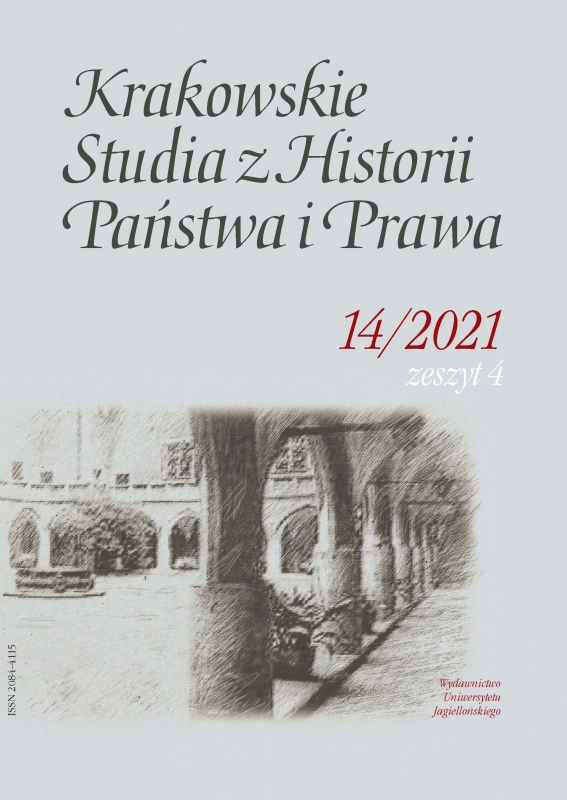Potrzebne nowe pytania i… większa staranność. W związku z pracą Piotra Pilarczyka o sądownictwie litewskiej komisji skarbowej
In Need of New Questions… and Greater Diligence. Apropos Piotr Pilarczyk’s Monograph on the Judiciary of the Lithuanian Treasury Commission
Author(s): Andrzej ZakrzewskiSubject(s): History, Local History / Microhistory
Published by: Wydawnictwo Uniwersytetu Jagiellońskiego
Keywords: Grand Duchy of Lithuania; Treasury Commission; judiciary
Summary/Abstract: Contemporary Polish legal historians’ writings rarely concern the political system of the Polish- Lithuanian Commonwealth, and even less often any substantial or procedural law thereof. Matters relating to the Grand Duchy of Lithuania are becoming less and less popular in Polish academia as well. Actually, such a phenomenon is quite understandable, when one takes into account the expanding scholarly activities among Lithuanian and Belorussian researchers, and the archives abundant in source materials in these countries. Having that in mind, anyone interested should pay particular attention to Dr. Piotr Miłosz Pilarczyk’s monograph that deals with the topic of the Lithuanian Treasury Commission in the years 1765–1794.The strongest point of the above-mentioned book is undeniably the fact, that the author conducted extensive archival enquiry and based his work on collected primary source materials – mainly records of the judiciary activities of the Commission. Unfortunately, the author’s failure to include materials from other sources (for instance correspondence) resulted in an unsatisfactory presentation of the social background of the activity of the Commission’s court, and, consequently, the motives behind its decisions are not always discernible. Although Pilarczyk correctly describes investigated data, he nevertheless rarely enriches his analysis with his own questions. The reviewed monograph contains numerous examples of judiciary praxis, which varied from the model as regulated in the Third Lithuanian Statute (1588). Regrettably, despite the homogeneous character of sources cited in the study, no quantitative methods were applied, which would presumably have resulted in a more detailed image of new trends in the praxis of administration of justice, including possible new or unconventional grounds (motives) behind court decisions. Although Pilarczyk’s work does provide many meaningful findings, he could have produced more interesting results.Hopefully, scholars will further analyse the collected source materials in the future, with an objective of presenting either a quantitative or prosopographic study that could broaden the body of knowledge concerning the judiciary in the Grand Duchy of Lithuania in the 18th century.
Journal: Krakowskie Studia z Historii Państwa i Prawa
- Issue Year: 14/2021
- Issue No: 4
- Page Range: 557-567
- Page Count: 11
- Language: Polish

